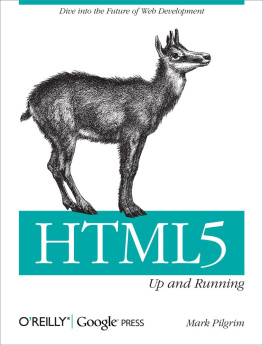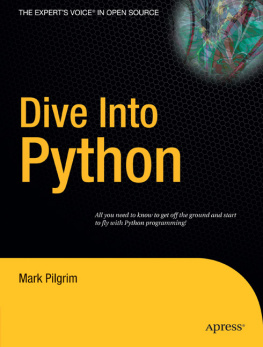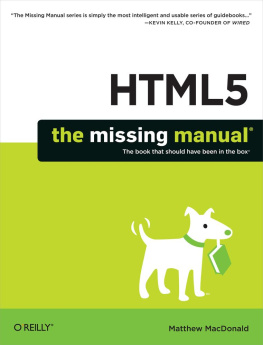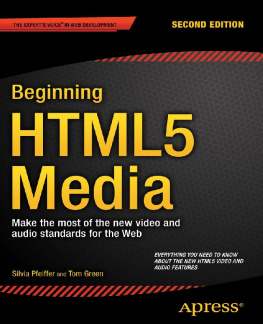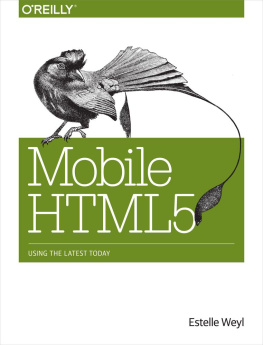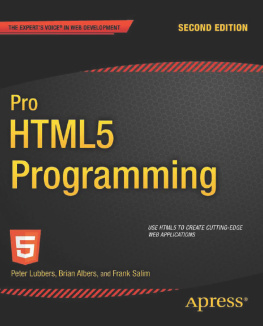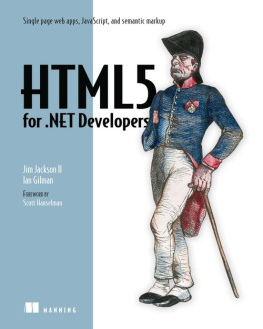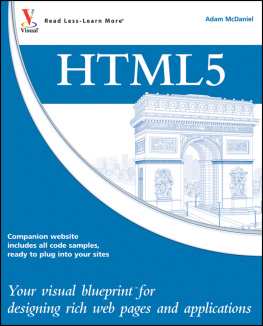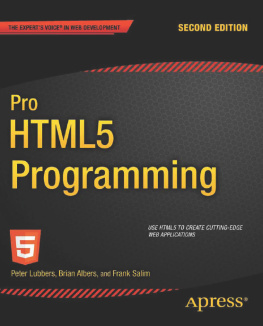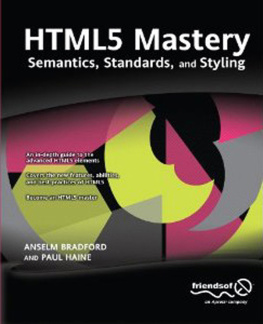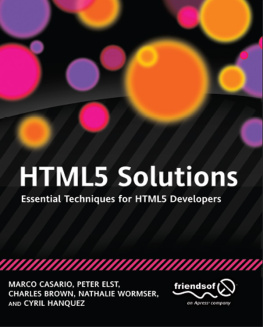Mark Pilgrim - HTML5
Here you can read online Mark Pilgrim - HTML5 full text of the book (entire story) in english for free. Download pdf and epub, get meaning, cover and reviews about this ebook. year: 2010, publisher: OReilly Media, genre: Computer. Description of the work, (preface) as well as reviews are available. Best literature library LitArk.com created for fans of good reading and offers a wide selection of genres:
Romance novel
Science fiction
Adventure
Detective
Science
History
Home and family
Prose
Art
Politics
Computer
Non-fiction
Religion
Business
Children
Humor
Choose a favorite category and find really read worthwhile books. Enjoy immersion in the world of imagination, feel the emotions of the characters or learn something new for yourself, make an fascinating discovery.
- Book:HTML5
- Author:
- Publisher:OReilly Media
- Genre:
- Year:2010
- Rating:4 / 5
- Favourites:Add to favourites
- Your mark:
HTML5: summary, description and annotation
We offer to read an annotation, description, summary or preface (depends on what the author of the book "HTML5" wrote himself). If you haven't found the necessary information about the book — write in the comments, we will try to find it.
If you dont know about the new features available in HTML5, nows the time to find out. This book provides practical information about how and why the latest version of this markup language will significantly change the way you develop for the Web.
HTML5 is still evolving, yet browsers such as Safari, Mozilla, Opera, and Chrome already support many of its features and mobile browsers are even farther ahead. HTML5: Up & Running carefully guides you though the important changes in this version with lots of hands-on examples, including markup, graphics, and screenshots. Youll learn how to use HTML5 markup to add video, offline capabilities, and more and youll be able to put that functionality to work right away.
Mark Pilgrim: author's other books
Who wrote HTML5? Find out the surname, the name of the author of the book and a list of all author's works by series.

